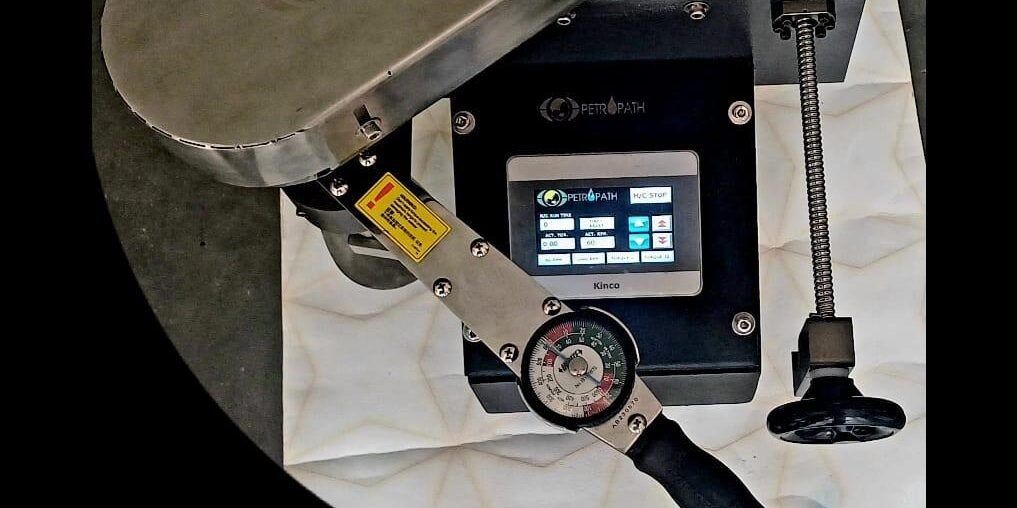Introduction
What is a Lubricity Meter?
The device provides readings for:
Lubricity coefficient – indicates how effectively the drilling mud reduces friction.
Film strength – measures the fluid’s protective barrier between metal surfaces.
Torque and drag – evaluates operational smoothness and mechanical resistance.

Key Terms Explained
Lubricity:
Lubricity defines a fluid’s ability to minimize friction and wear during drilling. Higher lubricity means lower torque, improved tool life, and greater drilling stability.
Film Strength:
This refers to the capacity of a drilling fluid to maintain a continuous protective layer between moving parts. Strong film strength prevents metal-to-metal contact, reducing tool damage and downtime.
Lubricity Coefficient:
A numerical value representing the fluid’s frictional properties. A lower coefficient indicates better lubrication and smoother drilling performance.
Why Film Strength Matters
Applications:
- Evaluation of oil-based and water-based muds for lubricity performance.
- Testing of lubricant additives and friction reducers.
- Monitoring film strength during drilling to prevent equipment failure.
- Optimizing mud formulations to reduce torque and drag.
- Supporting R&D laboratories in improving drilling fluid performance.
Boost Drilling Efficiency with Accurate Mud Lubricity Testing
- Select optimal fluid additives.
- Predict and prevent tool failure.
- Improve drilling accuracy and penetration rate.
- Extend the operational life of drilling components.
Why Choose Petropath ?
Key Advantages:
⚙️ Precision Measurements: Accurately evaluates lubricity, film strength, and friction coefficients.
💪 Rugged Construction: Designed for long-term reliability in both laboratory and field environments.
🔧 Easy Calibration: Simple setup, minimal maintenance, and consistent performance.
🌍 Proven Global Use: Trusted by drilling operators in Saudi Arabia, UAE, and Kuwait for dependable results.


